Case studies
A selection of compelling examples of teams within, or partnering with, the University of Manchester: These real life stories bring to life how collaboration, interdisciplinarity and teamwork principles can benefit research impact and research culture.
If you would like us to publish a case study on a great example of Team Research in action contact TeamResearch@manchester.ac.uk
Exploring accents and social mobility: A journey through Team Research
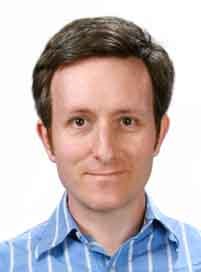
This case study was conducted by a cross-institutional team, consisting of Human Geographer Dr Michael Donnelly from the University of Bath, sociolinguist Dr Alex Baratta from The University of Manchester, and sociologist and geographer Dr Sol Gamsu from Durham University.
What was the focus of this project?
Our project focused on the ways in which British individuals feel the need, or are instructed, to modify their accents for the teaching profession to avoid broad realisations of their accents and the often negative stereotypes that accompany them. Our study also highlighted the broader theme of social mobility and how this is intertwined with changes in geography and class identity.
How were/are Team Research principles used in this project?
Our research journey was a true collaboration, blending human geography and sociolinguistics. By connecting these two disciplines, we gained fresh insights into the connections between region, accent and class. This approach allowed us to understand the associations between where someone is from, how they sound, and the social circles they navigate, and how this might change as part of social mobility.
How did Team Research principles benefit the project?
We learned from each other’s research in meaningful ways, such as considering how region and accent reflect each other, and how human geography provides an insight into the relationship between region and language. Likewise, linguistics can better appreciate the finer points about the ways in which class and region intersect, and how a combination of both, and not just singular factors, influence the accent of the speakers.
The opportunity to work with individuals from different academic/research backgrounds is exciting, and we learned a lot from each other about our research and knowledge base.
What is your top tip for working with Team Research principles?
Think outside the box and in doing so, link different disciplines together as part of the skill of application. For example, can bird calls used in mating rituals (biology) be applied to accents as part of the human dating ritual (sociolinguistics)?
How can interdisciplinary collaborations like yours be further supported?
Hold cross-disciplinary meetings with the express purpose of bringing together people across disciplines to brainstorm and identify ways to work together.
Further reading
- Donnelly, M., Baratta, A. and Gamsu, S. (2019). A sociolinguistic perspective on accent and social mobility in the UK teaching profession. Sociological Research Online 24 (4), 496-513.Watch a video of the three authors discussing their work as part of the award they received for their joint research:
Winners of the 2020 Sociological Research Online SAGE Prize for Innovation and/or Excellence Announced – The British Sociological Association
- Donnelly, M., Gamsu, S. and Baratta, A. (2022). Accent and the manifestation of spatialised class structure. The Sociological Review, 1-19.
- University of Bath blog post: Broad regional accents are a barrier to social mobility, research finds (bath.ac.uk)
How Communication and Relationships Drive the Stroke Rehabilitation Research Collaboration
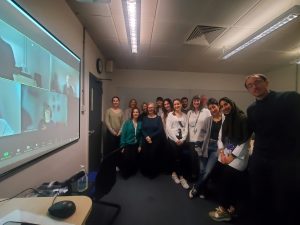
We interviewed Dr Emma Patchwood from the Stroke Rehabilitation Research Collaboration. Here, Emma explains how cultivating interpersonal relationships and employing clear communication contributes to the group’s effectiveness.
Could you tell us about your group?
“The Stroke Rehabilitation Research Collaboration Group (SRRCG) is led by Prof Audrey Bowen, and comprises a diverse assembly of individuals, including postgraduates, students, psychologists, therapists, statisticians, experts by experience (stroke survivor), academics from other Universities (MMU and Salford), and health service providers (Northern Care Alliance NHS Foundation Trust). Our group meets monthly in a hybrid format on the University of Manchester campus and discusses areas such as grant applications; paper publications; opportunities for collaboration; and practicing presentations for other events like conferences. The aim is to build a strong network of people interested in high quality stroke rehabilitation research that has the potential to make a difference to the lives of people affected by stroke.”
How are Team Research principles used within the team?
“We have been meeting as a group for several years and in the past four months we have been introduced to the University’s Team Research principles, and we were pleased to see we have been using several of these principles. For example: we don’t have fixed agendas for our meetings and welcome input from all members; especially more junior members of the team. We hope this empowers team members to guide meeting discussions. We also encourage opportunities for feedback in our meetings – the team’s diverse members promote a range of perspectives, enhancing the quality of content for presentations and funding proposals.
In instances where there are no specific agenda items, we utilise the time for general discussions and socialising. We believe that investing time in building interpersonal relationships is crucial for building relationships, to foster a supportive and secure team environment.
We have arranged an honorary contract for an expert by experience stroke survivor, who holds a crucial role in our team. This not only facilitated their skill development, but also empowered them to assume a leadership role in Patient Carer and Public Involvement and Engagement (PCPIE).”
Have you encountered any challenges working with Team Research principles?
“With such diverse expertise in one room, it can be difficult to fully understand other people’s research, so we try to use plain English, and encourage questions. This has proved to be good practice for presenting to other groups, or lay audiences.”
What are your top tips for working with Team Research principles?
- Pitching to the audience: Imagine you are describing what you do to a family member – what would you say?
- Value connection and communication for its own unmeasurable worth. Just getting together for a coffee makes people feel valued, safe, and part of the team.
- Emphasise both dedication to the team and dedication to research. This dual commitment plays a pivotal role in enhancing research quality.
Key publications/links
The SRRCG has provided support and feedback for numerous bids; co-created presentations given at national and international events; shared knowledge; and established new working collaborations; and much more. Here are some areas of work of SRRCG team members:
https://www.youtube.com/@watersstudy
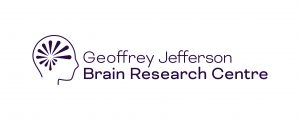
Diverse Minds, One Goal: The Power of Team Research in Systemic Sclerosis Diagnosis
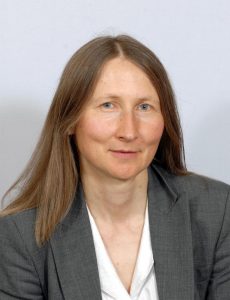
In this case study, Professor of Rheumatology, Ariane Herrick, tells us about how their team of diverse backgrounds and expertise facilitated early diagnosis of the rare disease systemic sclerosis.
Can you tell us about your project in a nutshell?
The project, funded by the NIHR, aimed to simplify the early diagnosis of a rare disease: systemic sclerosis. Early diagnosis is crucial for timely treatment of painful finger and toe ulcers and potentially life-threatening internal organ issues. Most patients with Systemic Sclerosis experience painful finger discoloration when cold making early diagnosis possible. This is called Raynaud’s phenomenon. Looking at the person’s nailfolds (the area where the nail grows from the finger) using a technique called nailfold capillaroscopy helps differentiate between Systemic Sclerosis-related Raynaud’s and common Raynaud’s. However, most rheumatologists assessing Raynaud’s patients do not perform this test, leading to missed diagnostic opportunities.
The project’s main goal was to create a system that can capture high-quality nailfold capillaroscopy images using affordable handheld devices. These images would then be used to calculate a biomarker for capillary abnormalities. The system would assist rheumatologists in image acquisition and image interpretation. This approach received strong support from Scleroderma and Raynaud’s UK (SRUK) because it might improve patient experience and diagnosis times.
How were/are Team Research principles used in this project?
Successful delivery of the project was only possible through a team approach. The team met weekly throughout the project, and included individuals of very diverse backgrounds:
- Patients, who presented their views and perspectives, drawing from their own experiences and who were actively involved throughout the project from planning to successful completion.
- Scientists with expertise in computer science, imaging and physics. Their contribution was to develop the imaging system, apply it to different microscopes, and develop a robust biomarker for Systemic Sclerosis.
- Clinicians, who recruited and supported participants, and provided context for ‘roll-out’ in the out-patient clinic.
- Vascular technicians, who acquired the capillaroscopy images.
- Statisticians, who contributed to study design and performed statistical analysis.
- Health economists, who developed the first stage of a business model, to be further developed in the next stage of the research.
- The project co-ordinator, who ensured smooth running of the project and achievement of milestones.
- Charity partner, SRUK were very much part of the broader team, running the patient survey and inputting into preparation for our bid for next stage funding.
Public contribution was key to the success of the study and. It was achieved through patient representation on the Steering Group and a series of Patient Reference Group meetings.
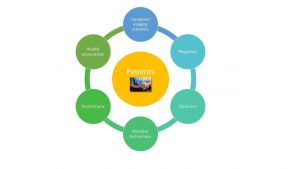
Figure – Nailfold capillaroscopy research team
How did Team Research principles benefit the project?
We facilitated efficient collaboration through open communication across levels of seniority and shared decision-making. Also, although each team member had their own roles, each had an understanding of everyone else’s roles, and because of the complementary diverse backgrounds, this enabled cross-fertilisation of ideas, and shared problem-solving.
Did you encounter any major challenges or hurdles when trying to work with Team Research principles?
The impact of the Covid-19 pandemic taught us the advantages of virtual meetings. Holding meetings virtually made it very much easier for patients to attend, many of whom have mobility issues because of either musculoskeletal or cardiorespiratory involvement of their disease. As a result, virtual meetings will be part of the next phase of our research.
What would be your top tips for working with Team Research principles?
Commitment to a common goal.
Understanding one another’s roles and complementary expertise.
Co-creation through user or public contribution. For example, co-creation of the content/format of capillaroscopy reports.
Key publications
Gurunath Bharathi P, Berks M, Dinsdale G, Murray A, Manning J, Wilkinson S, Cutolo M, Smith V, Herrick AL, Taylor CL. A deep learning system for quantitative assessment of microvascular abnormalities in nailfold capillary images. Rheumatology 2023; 62 (6): 2325-2329.
Eden M, Wilkinson S, Murray A, Vail A, Taylor C, Payne K, Herrick AL. Nailfold capillaroscopy: a survey of current UK practice and ‘next steps’ to increase uptake amongst rheumatologists. Rheumatology 2023; 62 (1); 335-340.
Berks M, Dinsdale G, Marjanovic E, Murray A, Taylor C, Herrick AL. Comparison between low cost USB capillaroscopy and videocapillaroscopy: a pilot study. Rheumatology 2021; 60: 3862-3867.
Herrick AL, Berks M, Taylor C. Quantitative nailfold capillaroscopy – update and possible next steps. Rheumatology 2021; 60(5):2054-2065.
Using Team Research principles to identify associations and replicate findings in Rheumatoid Arthritis patients and their treatments

This study was conducted by collaborators from both academia and industry partners including; Chuan Fu Yap, Darren Plant, and Anne Barton, Nisha Nair (University of Manchester), Annick de Vries (Industry Partner, Sanquin), Floris C Loeff (Industry Partner, Sanquin), Ann W Morgan, (Leeds University), John D Isaacs (Newcastle University), Anthony Wilson (University College Dublin), Kimme L Hyrich (University of Manchester) and the authors would like to acknowledge the assistance given by IT Services and the use of the Computational Shared Facility at The University of Manchester, the study coordinators the research nurses, the research technicians who process the samples, and the patients who contributed their time and donated the samples.
Can you tell us about your project in a nutshell?
Rheumatoid arthritis (RA) is often clinically managed using Tumour Necrosis Factor inhibitor (TNFi) therapy. However, one type of TNFi – monoclonal antibody derived TNFi – is associated with development of immunogenicity (defined as the ability of cells/tissues to provoke an immune response and is generally considered to be an undesirable physiological response) and subsequent loss of therapeutic effects.
This study strengthens the evidence of a genetic link to the development of immunogenicity in patients receiving monoclonal antibody derived TNFi therapy. It emphasizes the importance for clinicians to consider methotrexate co-therapy and underscores the potential benefits of genetic testing prior to starting adalimumab therapy.
How were/are Team Research principles used in this project?
This project embodies the principles of Team Research such as shared vision, effective communication, mutual trust and sharing of resources and expertise. This project relied on a collaborative effort to harness the strengths and expertise of a diverse team, consisting of biostatisticians responsible for analysis, industry collaborators overseeing sample assay, and clinicians providing clinical insights and data collection.
This project exemplified Team Research principles by dedicating time to collectively develop a shared vision. This was achieved through regular meetings where progress of the project was updated for all members, and feedback was exchanged on the best approaches for the project.
The project team also practised effective communication by developing trust among team members. This involved emails and virtual meetings as some of the members are located overseas.
The openness and collaborative spirit allowed for a dynamic exchange of ideas, fostering a supportive environment where everyone’s contributions were valued and recognized.
By having representatives from different disciplines, we had different expert resources to call on for tackling any problems. Sharing of resources and expertise was facilitated by email, Dropbox cloud storage and Zoom meetings.
How did Team Research principles benefit the project?
Working collaboratively with a diverse team provided numerous benefits and harnessed diverse perspectives, expertise, resources which allowed us to address complex issues in a more effective and comprehensive manner. By leveraging our collective knowledge, we identified potential biomarkers as well as steps to improve adalimumab treated patient’s outcome. This outcome can significantly influence patient care and treatment strategies, demonstrating the immense value of interdisciplinary teamwork in research.
What is your top tip for working with Team Research principles?
The top tip would be to identify your (group’s) weakness and seek out collaborators that can fill in that gap. This would allow for gaps in knowledge to be filled, as well as fostering a collaborative environment enriched by diverse perspectives.
How can interdisciplinary collaborations like yours be further supported?
It would be great if there was a platform where all the researchers’ expertise and availability is listed to make it easier to identify expertise to complement our skillset.
Key publications: https://ard.bmj.com/content/early/2023/09/12/ard-2023-223955
Fostering Collaboration in The Wellcome Centre for Cell Matrix Research
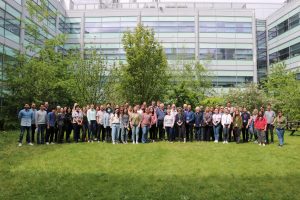
Prof. Rachel Lennon discusses ways to promote positive research culture. She also examines strategies of engagement with students, patients, and the communities served.
How Team Research Fosters Collaboration in The Wellcome Centre for Cell Matrix Research
A multidisciplinary research environment thrives on teamwork. Rachel Lennon, Director of the Wellcome Centre for Cell Matrix Research, and Julia Schoonover, Engaged and Inclusive Research Manager, tell us how they’re fostering collaboration in the centre by valuing diverse expertise, recognising contributions and breaking down hierarchical barriers.
Could you tell us about the Centre?
The Wellcome Centre for Cell Matrix Research is constantly evolving. Founded in 1996, the Centre has seen a significant expansion in the number of academic teams. The Centre’s research focuses across three key themes: chrono-matrix, immuno-matrix and mechano-matrix and hosts 20 research groups and a total of 110 staff, spreading across 30 teams. Our growth necessitates a focus on fostering close collaborations across team members with diverse expertise.
How are Team Research principles being used at the Centre?
The Centre is moving away from siloed research groups towards interdisciplinary teams. These teams comprise academic researchers, technicians, experimental officers, statisticians, and bioinformaticians. This ensures a wider range of expertise is brought to bear on complex research problems.
We recognize the limitations of the traditional academic hierarchy. We are currently involved in a Task and Finish group around improving career progression for experimental officers and technologists with Professor Melissa Westwood (Associate Vice President for Research) who leads it, and formerly with Helen Ashley (Director of Organisational Development).
The Centre actively seeks out and nurtures leadership potential among Early Career Researchers (ECRs) from diverse backgrounds, for example, through empowering them to develop symposia. This not only injects fresh perspectives but also prepares future leaders for the Centre.
Authorship on publications and grant applications acknowledge the contributions of all team members, including roles not traditionally included, such as core facility staff like electron microscopists. This fosters a sense of shared purpose and value by recognising that ‘this couldn’t have been done this without them’.
How have Team Research principles benefitted the project?
The cross-pollination of ideas across disciplines leads to a more innovative research environment. Complex research questions are tackled more effectively through the combined expertise of diverse teams. Recognizing the contributions of all staff members boosts morale and motivation.
What are the challenges of working with Team Research principles?
Changing traditional mindsets to acknowledge the vital role of non-traditional roles such as core facility staff requires ongoing effort. Creating opportunities for social interaction beyond scientific communication is crucial for building strong team bonds.
What are your top tips for working in this way
- Human beings and not just scientists! – Minimise the hierarchical model and recognise team members as individuals with personal lives and interests beyond their research. Acknowledge the intimidation senior researchers can pose to early-career colleagues, and create opportunities for informal social interactions to foster relationships and culture.
- Empower early- and mid-career team embers by providing a safe space and opportunities to lead activities and develop skills.
One Bin to Rule Them All
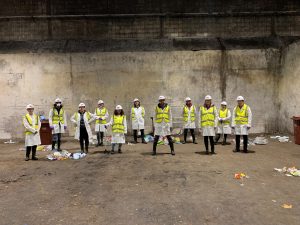
In this case study Dr Helen Holmes describes how ‘One Bin to Rule Them All’ brought together material scientists with social scientists and economists using an interdisciplinary approach to tackle the issue of plastic recycling.
Can you tell us about your project in a nutshell?
‘One Bin to Rule Them All’ was a three-year project that brought together material scientists with social scientists and economists using an interdisciplinary approach to tackle the issue of plastic recycling.
We aimed to improve plastic recycling by exploring the concept of ‘One Bin’ to hold all plastic-like items. We wanted to identify the sorting decisions to be made, creating value, and working with stakeholders from across the plastics supply chain (including manufacturers, policymakers, households and waste organisations) to unpick the challenges in plastic recycling.
How were/are Team Research principles used in this project?
One Bin to Rule Them All was an interdisciplinary project from the outset. Led by Co-Is from three different disciplines (polymer science, business and sociology) we sought to co-create the research design to ensure a fully integrated team research project throughout its life course. This included involving external stakeholders and partners from industry and policy from the outset. We devised a project which not only built on the capacities and expertise of each discipline and many of the stakeholders involved but also brought them together in novel and innovative ways.
How did Team Research principles benefit the project?
Working in the way we have has been very productive, and our interdisciplinary approach has undoubtedly bolstered the impact the findings from the project have had. Together we have produced a Policy white paper which brings together the findings from across the project. This has had significant policy and industry influence and a lot of media coverage. For example, the recommendations from the white paper have led to adoption of ideas by Department of Environment, Food, and Rural Affairs, Waste and Resources Action Programme, WRAP, Zero Waste Scotland and Greater Manchester Combined Authority. The UK government’s recent Simpler Recycling scheme also mirrors the report’s findings. We have featured on BBC 1, Channel 4 and in the Sunday Times, In-News and Washington Post.
Alongside the white paper we also used our interdisciplinary findings to produce a materials hierarchy. This is a tool which enables industry and policy organisations to assess the most sustainable and economically viable end of life fate for a particular type of plastic. This has been adopted by 14 industry partners.
What is your top tip for working with Team Research principles?
Communication, communication, communication!
How can interdisciplinary collaborations like yours be further supported?
More resources towards encouraging interdisciplinary ways of working such as workshops and training. Building upon and expanding the resources offered by the platforms and the Team Research team would be a great place to start.
Key publications
Policy report: https://zenodo.org/records/8341648
Materials Hierarchy:
Website:
https://www.sustainablefutures.manchester.ac.uk/research/case-studies/one_bin_to_rule_them_all/
Links to our One Bin videos:
https://www.youtube.com/watch?v=7v__PyGAhaA
https://www.youtube.com/watch?v=RJvjnscGqU4
